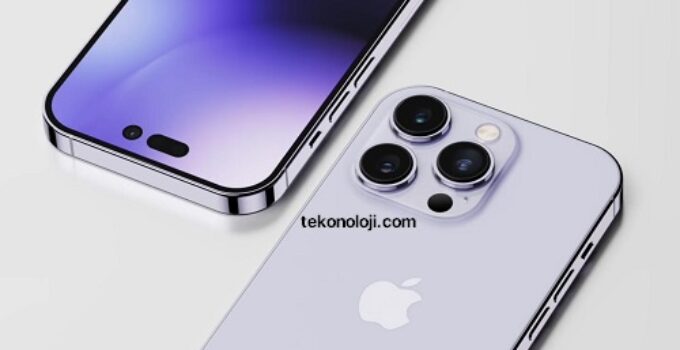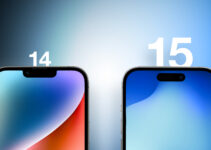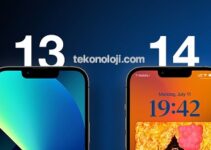IPhone 14 review, with everlasting memory. Where can it start and above all what conclusions could the review of an iPhone 14 draw, the base iPhone of the year 2022, which announces itself with the same processor, the same design, the same materials, cameras with the same resolution, the same autonomy of the iPhone 13 we reviewed in 2021? We know the answer, net of the emphasis of the Apple event, and you know it too. But if you have the patience to follow us all the way you will understand that not all things are as obvious as they seem.
Tesla recalls a million cars for window problems
iPhone 14 how it’s done
Let’s start with the description of the iPhone design. Usually it is the easiest point and this year it is even more so: if we talk about iPhone 14 (for iPhone 14 Plus the speech is different, but we will talk to me in due time) go and get everything we wrote last iPhone 13 year, replace “13” with “14” et voilà that’s it. Yes, there are a couple of new colors (a new blue and a new purple) and a slightly larger camera block (but not so different as to prevent at least some cases from continuing to work) but essentially nothing has changed. : the materials, aluminum and glass, are the same and the measurements are the same (only one gram and 0.15mm thicker).
Phone 14 also has the classic notch we have known for years, not the new iPhone 14 Pro notch that turns into Dynamic Island.
Is its design ugly? No. Has it aged? We would not say. iPhone 14 continues to be a very pleasant phone, well designed, with a modern profile that you can guess built with care and with quality materials. It is also perfect in proportions and even relatively light. But even this is not new since this was also the iPhone 13.
Repairability
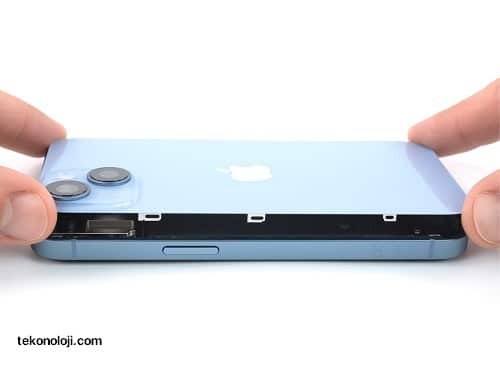
Apple says that the different architecture was essentially created to improve heat dissipation but it also benefits the common user because with the iPhone 14 repair costs go down. Replacing the rear glass now costs € 199 instead of € 539 because you no longer need to change the whole phone (as happened with iPhone 11) or carry out complicated operations that involved replacing elements applied to the lid (as happened with iPhone 12 and iPhone 13 ). This simplification is reserved only for the iPhone 14. iPhone 14 Pro remains constructively identical to the iPhone 13 Pro, therefore difficult to disassemble and expensive to repair.
The screen
If the design doesn’t change, the screen isn’t different either. This is the classic 6.1-inch OLED with the exact same characteristics as those of the iPhone 13: 2,532 x1,170 pixels, with a density of 460 ppi. The maximum brightness is fixed at 800 nits (no brightness increase outdoors) with a peak of 1,200 nits when it comes to HDR content. There is neither ProMotion technology nor the always-on display.
These last two features are reserved, like Dynamic Island, for the iPhone 14 Pro and iPhone 14 Pro Max. But even if in the end it is more of a flag than practical limit, it would have been desirable that at least the ProMotion technology made its appearance on the successor iPhone 13. All the competition has screens with a refresh of 120Hz, the fact that iPhone 14, a smartphone from 1000 euros, is stuck at 60 Hz is a clear disadvantage at least from the point of view of the comparison on the specifications.
The quality of the screen at first glance looks the same, excellent, as in previous models. In reality, some sites would have detected a decrease in color fidelity with specific instruments compared to the iPhone 13. We await confirmation from specific tests and other sources.
The processor
Among the things that have not changed there is also the processor; in the iPhone 14 there is the same A15 as in the iPhone 13. Of course there is an extra graphics core (as in the A15 that was used by the iPhone 13 Pro last year) so that the iPhone 14 exceeds its own by about 15% predecessor in the field of graphic calculation.
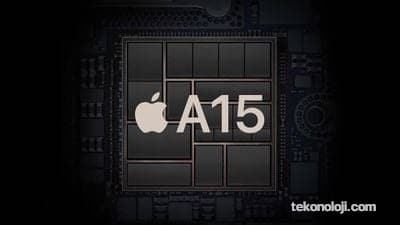
But the difference in speed between one processor and another has always been an interesting topic when it comes to Apple products, also because Apple’s processors are two generations ahead of the competition. The theme is the perspective of aging between one generation and another of the processors and here the generation is the same.
In the past when we wrote about the iPhone, the fact that there was a new processor inside has always been one of the arguments to recommend an upgrade from the old to the new device because Apple has a habit of establishing obsolescence based on the age of its processor. . Here we have a processor that on paper equates iPhone 13 to iPhone 14 with the consequent fear that iPhone 14 at least for the processor is an iPhone 13.
The fear is mitigated by the extra graphics core which coupled with the 6GB of RAM (now standard on all models) could be an advantage over the old A15 of the iPhone 13.
The camera
The processor does not change anything in the user experience neither compared to the iPhone 13 nor to the iPhone 14 Pro. a telephone is used.
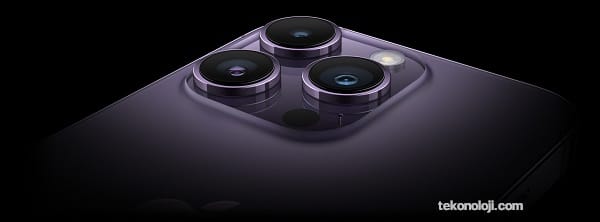
On the iPhone 14, although the lenses are still two and the resolution is still 12 megapixel resolution, Apple has changed a few things.
Main camera
The main camera of the iPhone 14 is in the first place different from that of the iPhone 13. From the specifications dictated by Cupertino we learn that the sensor size has increased and the aperture slightly increased, from f1.6 to f1.5. These data coincide with those of the main camera of the iPhone 13 Pro, which suggests that there are at least some components in common with last year’s “flagship” phone.
The Photonic Engine also arrives on the iPhone 14, an image processor function that similarly to Deep Fusion takes the best parts from the frames of a single shot before they are compressed, resulting in an image that has tonal and detail advantages.
However, the shooting differences between iPhone 13 and iPhone 14 in the main camera are absolutely minimal in the end; with an effort you can find a very slight greater definition and sharpness in particularly dark areas. But if the light is good, there are no perceptible differences to the human eye between a photo taken by iPhone 13 and a photo taken by iPhone 14.
We also report that always in very low lighting conditions, as already iPhone 14 Pro, iPhone 14 tends to exaggerate the sharpness doing some damage. The photos seem in some cases overprocessed and as such not always completely natural.
Ultra wide angle camera
The ultra-wide-angle camera that continues to work here like on the iPhone 13 (no Macro) hasn’t changed. It is not surprising that with normal light shooting we did not find any differences, not even looking for them pixel by pixel. But this is predictable: as mentioned, the sensor and aperture are the same and the Photonic Engine does not work miracles.
Perhaps some small differences are detected in the shot in very particular conditions, when the environment is very dark and here the merit is, instead, probably due to the Photonic Engine. In fact, you have to go to extreme situations to find that iPhone 14 controls noise better and produces less artificial lighting. But it’s all about the details.
All in all for the photos …
With this we do not want to detract from the photos of the iPhone 14 which are (as in the iPhone 13) very pleasant, with saturated and faithful colors, a good management of the lights and the ability to correctly interpret what the sensor captures and apply artificial intelligence. the corrective to improve each shot.
Here the first sin is that if you want to put creativity into the composition it is more difficult to do it than with the iPhone 14 Pro. There is, however, a much worse original sin: the already tangible distance that iPhone 13 had from iPhone 13 Pro in the photographic field is increased and not a little in the comparison between iPhone 14 and iPhone 14 Pro.
The Pro has a new generation system with a 48 megapixel sensor and 4 different focal steps not to mention the LiDAR sensor that allows faster and more precise focusing even when the light conditions are not good. iPhone 14 instead uses the same modestly evolved iPhone 13 platform.
The consequence is that if iPhone 14 Pro appears projected towards the future given the margin of work that Apple will be able to apply in terms of computational photography with a 48 megapixel sensor, iPhone 14 remains anchored in the past.
The front camera
The front camera also has some minor changes. The increase in sensor size and aperture should improve the overall quality of selfies, a bit like what happened with the iPhone 14 Pro camera. In reality when the light is good, not unlike the iPhone 14 Pro, the differences are human eye are not there. The no longer fixed but variable focus camera could have given the iPhone 14 some advantage but what it is we have not been able to identify it.
Video
Apple in the video has such an advantage over the competition that it allows it not to worry too much even when it is not running or is almost stationary as happens with the iPhone 14. It is necessary to have a real specific competence to thoroughly test the iPhone as a video camera and therefore we refrain from in-depth comments, but we can still say that fluidity, color, brightness certainly cannot displease those who will use this device to accompany their free time.
Technically all the excellent innovations of the iPhone 13 remain such as the cinema mode which now reaches 4K 30 Fps (and no longer only in HD resolution), slow motion up to 240 fps, 4K recording at 24 fps, 25 fps, 30 fps or 60 fps, Time-lapse in Night mode.
The most important novelty is Action Mode, a new stabilization system whose operation is impressive. Although it requires perfect lighting, does not provide 4K resolution and applies massive frame cropping, in terms of stabilization we are not far from what you would get from an entry level Gimbal.
Autonomy and recharging
iPhone 14 has the same autonomy as iPhone 13. It is quite easy to get to the end of the day with 30% remaining battery without saving anything, an excellent figure but not different from that of iPhone 13. Apple actually lists some steps forward in the specifications (the biggest ones are in audio playback: +5 hours) but using the phone for a few days and doing three recharges we couldn’t really establish a practical difference in the mix of calls, browsing, snapshots, some streaming videos and listening to podcasts .
Speaking of charging, iPhone 14 always uses the usual Lightning connector and Apple’s fashionable “fast charging” ranking, therefore about twenty watts in input that allow (as for the iPhone 14 Pro) to recover more than 50% of autonomy in half an hour and to restore 100% in about an hour and forty.
For true fast charging we will have to wait for the arrival of USB-C.
All the rest
iPhone 14 shares a couple of new features with iPhone 14 Pro: emergency satellite communication and incident detection. We talk about it extensively in the review of the other model and it is useless to repeat the same considerations. But a few notes with a reference to the identity of the iPhone 14 are needed
Satellite communication
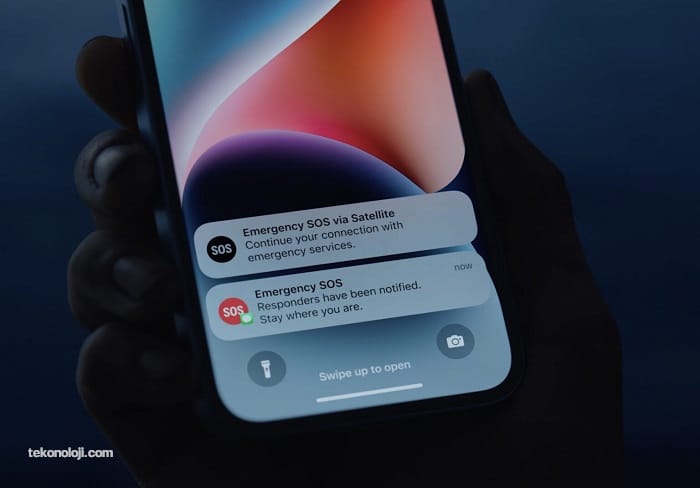
Satellite communication, although not currently active outside the US and Canada, is a brilliant idea based on a sophisticated technical implementation. We are not particularly interested in the fact that when we are in difficulty during a climb to the Matterhorn or short of breath during the Marathon du Sable we will be able to call for help but the fact that we are faced with a tool that in the future could change the face of the iPhone by transforming it into a powerful tool for many communication uses. Too bad that when this scenario materializes, iPhone 14 will have aged in many other primary respects.
Incident detection
A | Regarding accident detection, a function based on a refinement of sensors that have the ability to detect when iPhone is involved in a serious car crash and call for help, we also applaud the technology here. In reality there is not much prodigious: in Europe accident detection overlaps with eCall, a mandatory service on all new generation cars. eCall was created by European regulation in order to detect an accident and call for help; it therefore does the same thing as the iPhone and something more (for example, it is able to give information on the direction of the car, the color, the brand and the type of accident).
Only with eSim (in USA)
Finally, we point out that the iPhone 14 (such as the iPhone 14 Pro) sold in the USA are without physical SIM. In fact, they operate only with the eSim, a virtual and programmable card with the telephone number of any operator. The lack of the ticket is not for now what concerns the phones sold in our country, fortunately we would say.
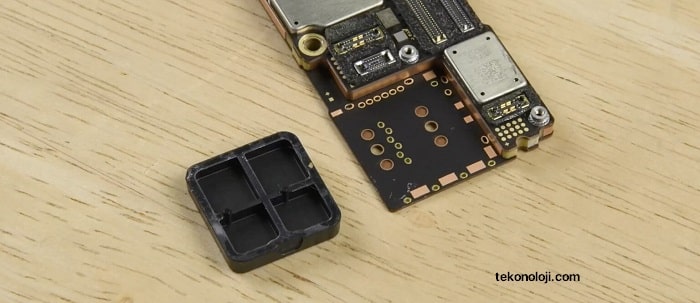
Removing the SIM is a good idea because it frees up space inside the phone (just see the image that we publish above taken by iFixIt which shows how it is done inside an American iPhone 14 Pro Max where instead of the SIM connector there is a block of plastic) but this must happen without trauma and the time is not ripe. It is up to those who manage the networks to lay the foundations to say a peaceful farewell to physical cards; on the other hand, most of the VMO operators but also important operators with their own network such as Iliad do not offer eSIM.
Conclusion
iPhone 14 is an excellent phone: it takes good photos, has excellent battery life, is stylistically pleasing. It was born out of nowhere and had nothing around it, we would recommend it with enthusiasm. But it comes from iPhone 13 of which it is the almost twin brother and around it has iPhone 14 Pro which, although not a revolution, has made many more steps forward compared to iPhone 13 Pro than iPhone 14 has made compared to iPhone 13. The result is that the difference between the Pro model and the non-Pro model is increasing and by a lot both in current terms and, especially in terms of future prospects. In practice, iPhone 14 Pro introduces several new ideas (before other Dynamic Island but also the 48 Megapixel camera) that indicate the path that Apple will take and towards which iPhone 14 cannot go.
We can therefore say that iPhone 14 Pro is the prelude to the future of the platform while iPhone 14 is the maximum possible refinement of that generation born with the iPhone X, now in its final chapter. The successor of the iPhone 14 will necessarily have to be something different.
For this reason, if last year we defined iPhone 13 as the most rational choice for everyone, this year we cannot say the same thing as iPhone 14: for those who want to buy a new phone, the most rational choice, net of the cost, is iPhone. 14 Pro. Anyone who has an iPhone 11 or an even older phone does not want to spend what iPhone 14 Pro costs, rationally must look at the iPhone 13 or perhaps the iPhone 12. He will not be able to tell posterity that he had the epitaph in his pocket an entire generation of iPhone but between the lowest price list and discounts, it could go up to spend up to 300 euros less for something that is definitely not worth 300 euros less.
Price and availability of iPhone 14
If we talk about price, for a few months, there was the fear that the iPhone 14 would cost more than the iPhone 13. Then the hope was born that at least for the entry model, despite the inflation that has hit everyone countries of the world and the growth of energy costs there would have been no changes to the price list. And it was, more or less, like this.
Let’s say more or less because if it is true that for those who pay in dollars there are no price differences, in Euros the increase is around 10%. So the 128 GB iPhone 14 costs 1029 euros against the iPhone 13 in 939 euros. The 6.1-inch iPhone 14 has a price starting at 1179 euros
The iPhone 14 at the time of writing can be purchased on the Apple Store and at all Apple authorized stores with almost immediate availability. It is also on sale on Amazon with a price identical to that of Apple and fast shipping times: those who buy today, receive tomorrow.
